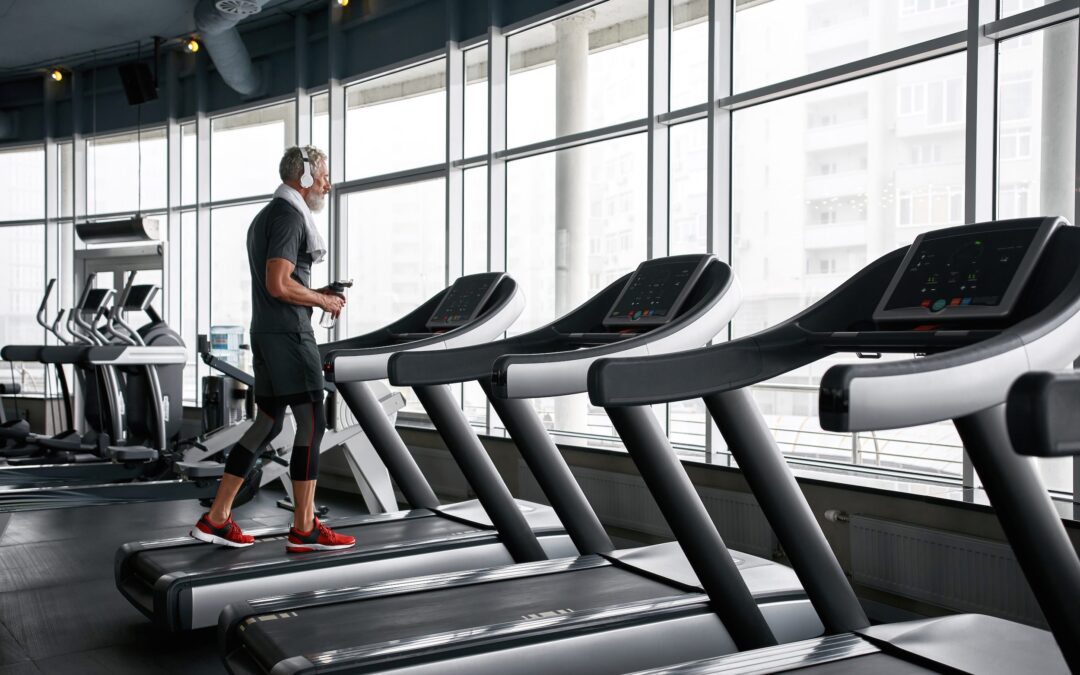Can Exercise Reduce the Risk for Falls Among Older Employees?
By Richard Bunch, PhD, PT
As the work force ages, employers are finding that on the job injuries related to slips, trips and falls are increasing in incidence. Ergonomic interventions to address this issue typically includes removing trip hazards, increasing floor traction surfaces, ensuring use of proper footwear, and improving ambient lighting (as older people require much more light for visual acuity and depth perception as younger workers).
Falls are simply more common as we age. As a physical therapist with a PhD in neuroscience and human anatomy, I have always pointed to changes in muscular strength, neuromuscular reaction time, and reduced visual acuity as primary main physiological risk factors for falling as we age. These changes result in delayed reaction times and poorer depth perception when walking. Research shows that compared to members of similar older age groups who have not fallen, those that did fall had worse neuromuscular function as evidenced by a reduced rate of force development. Although ergonomic interventions can help with this issue, the question remains: Can exercise really improve balance and reaction times as we get older?
In a 2022 study presented at the 38th Congress of the European Committee for Treatment and Research in Multiple Sclerosis, by researchers at Aarhus University in Denmark, the rate of muscular force development was analyzed as a potential risk factor for fallers. Rather than examining maximal muscle strength, the study focused on the rate of force development (RFD) as a measure of explosive strength, or simply the amount of force that an individual can produce over a given time period.
When a person is about to fall, what’s most important is not only how strong the person is, but how quickly they can produce enough force to counteract the balance perturbation, thus avoid falling, said the primary researcher, Taul-Madsen. “If a person is very slow to produce this force, they will have fallen before he or she has produced enough force to counteract the balance perturbation that the person is experiencing,” he added.
Research has shown a reduced RFD exists in patients with Multiple Sclerosis compared to healthy controls. However, little is known about the impact of RFD on falls in those with MS as well as the normal aging population. To investigate, researchers studied 53 adults with MS — 24 had no fall history in the prior year, 16 had 1-2 prior falls and 13 had 3 or more falls. Knee extensor neuromuscular function, including maximum muscle strength and RFD at 50 and 200 milliseconds, was assessed using isokinetic dynamometry. It was found that the non-fallers had the fastest rate of force development. On this measure, “we saw quite a big difference between the non-fallers and the two groups of fallers,” Taul-Madsen reported. Non-fallers also had greater maximum muscle strength than the fallers. He noted that both strength and RFD can be improved with resistance training.
Exercise to Improve Strength and RFD – A Highly Promising Approach
Commenting on this research for Medscape Medical News, Brian Sandroff, PhD, senior research scientist, Kessler Foundation, West Orange, New Jersey stated that “This study is interesting in that recurrent fallers were distinguished based on having worse neuromuscular function.” In general, this study provides evidence on the benefits of exercise and having better physical fitness in persons to help prevent falls. “The evidence seems to be converging more and more on this, as research groups across countries and continents are reporting on similar themes,” said Sandroff.
Note to Employers: Promoting fitness and exercise at work by offering fitness club memberships and/or contracting fitness consultants to help motivate employees to exercise may have a significant positive impact on reduction of slips, trips and fall injuries among an aging workforce. Our clinical experience at WorkSaver Systems and ISR Physical Therapy with patients supports the benefits of strengthening and aerobics exercises to improve balance and reaction times.
Reference: 38th Congress of the European Committee for Treatment and Research in Multiple Sclerosis (ECTRIMS) 2022: Abstract O086. Presented October 27, 2022.
For more information on exercises to improve balance, contact Trevor Bardarson at trevor@worksaversystems.com or trevor@isrphysicaltherapy.com.

